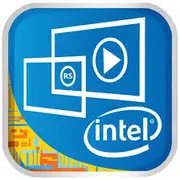Intel Core m3-8114Y

Intel Core m3-8114Y: Compact Energy Efficiency for Mobile Tasks
April 2025
Architecture and Process Technology: 10 nm and Modest Ambitions
The Intel Core m3-8114Y processor, released under the codename Cannon Lake-Y, became one of Intel's first chips built on a 10-nanometer process. However, its fate was controversial: initially touted as a breakthrough, it faced production delays and limited availability. By 2025, this processor retains a niche position but remains relevant for ultraportable devices.
Key Features:
- 2 cores and 4 threads thanks to Hyper-Threading.
- Base frequency — 1.5 GHz, maximum in turbo mode — 3.2 GHz.
- 4 MB of L3 cache — modest but sufficient for light tasks.
- Integrated graphics Intel UHD Graphics with a base frequency of 300 MHz and peak of 900 MHz. Supports DirectX 12 and 4K@60 Hz output.
Architecture Features:
- Support for AVX-512 — a rare option for mobile chips at the time, useful in niche scenarios (e.g., data encryption).
- The 10-nm process allowed for reduced power consumption but did not provide significant performance improvements over 14-nm counterparts (e.g., Amber Lake-Y).
Power Consumption and TDP: Quiet Operation without Fans
The processor's TDP is 5 W, making it ideal for passively cooled devices. This is a key advantage for:
- Ultrabooks (e.g., Lenovo Yoga line).
- Convertible tablets (Microsoft Surface Go).
- Compact mini-PCs.
Thermal Characteristics:
Even under load, the chip rarely heats up above 60°C. However, prolonged operation in turbo mode may result in throttling — frequency reduction to 2.4–2.8 GHz to prevent overheating.
Performance: Modest Results for Basic Tasks
Office Work
- Running Microsoft Office, a browser with 10–15 tabs, messaging apps — comfortable.
- Delays are noticeable when working simultaneously with heavy PDF files or Excel sheets with 100,000 rows.
Multimedia
- Playback of 4K video (YouTube, local files) — effortless thanks to hardware decoding.
- Photo editing in Lightroom — possible but with delays.
Gaming
- Integrated UHD graphics handle only light games:
- Minecraft (720p, low settings) — 30–40 FPS.
- CS:GO (720p, minimum settings) — 25–35 FPS.
- Modern AAA projects (from 2025) — not feasible.
Turbo Boost mode temporarily raises the frequency to 3.2 GHz, but the increase is only noticeable in single-thread tasks (e.g., OS boot).
Use Cases: Who is the m3-8114Y Designed For?
The processor is suitable for:
1. Students — for taking notes, online courses, and Zoom conferences.
2. Office Workers — working with documents, emails, and CRM systems.
3. Travelers — due to battery life and the lightweight of devices.
Not suitable for:
- Gamers.
- Designers and video editors.
- Users working with virtualization or Big Data.
Battery Life: Up to 12 Hours in Power-Saving Mode
With a TDP of 5 W, laptops based on the m3-8114Y demonstrate impressive battery life:
- 8–12 hours when working with documents at moderate screen brightness.
- 5–6 hours during streaming video (Netflix, YouTube).
Power-Saving Technologies:
- Speed Shift — dynamic frequency management.
- C-States — turning off unused cores.
- Panel Self Refresh — reducing screen power consumption.
Comparison with Competitors: Outdated but Affordable
Intel Pentium Gold 7505 (2023, 10 nm)
- 2 cores / 4 threads, TDP of 15 W.
- 20–30% more performant, but requires active cooling.
AMD Ryzen 3 7320U (2024, 6 nm)
- 4 cores / 8 threads, Radeon 610M.
- Better multithreaded performance and graphics. Laptop prices starting at $550.
Apple M1 (2020, 5 nm)
- 8 cores, TDP of 10 W.
- 2–3 times faster in multitasking. M1 devices in 2025 start at $700.
Conclusion: The m3-8114Y lags behind modern counterparts but is cheaper (laptops starting from $350).
Pros and Cons
Strengths:
- Low power consumption.
- Silent operation.
- Affordable device prices.
Weaknesses:
- Weak multithreaded performance.
- Outdated architecture.
- Limited support for modern technologies (e.g., AI acceleration).
Recommendations for Choosing a Laptop
1. Device Type: Ultrabook or convertible (e.g., ASUS ZenBook Flip UX363) with a diagonal of 11–13 inches.
2. RAM: At least 8 GB LPDDR4.
3. Storage: SSD 256 GB (preferably NVMe).
4. Screen: Full HD resolution, IPS matrix.
5. Ports: USB-C with Power Delivery support for fast charging.
Examples of 2025 Models:
- Lenovo IdeaPad Flex 5 11” — $399.
- HP Pavilion x360 — $429.
Final Verdict
The Intel Core m3-8114Y is a processor for those who value compactness and battery life over power. It is ideal for:
- Daily tasks (browsing, office work).
- Users who often work on the go.
- Budget-conscious buyers.
Key Benefits:
- Up to 12 hours of untethered operation.
- Quiet and lightweight laptop.
- Low price.
If your budget is limited to $400–500 and performance requirements are minimal, the m3-8114Y remains a sensible choice. However, for more demanding tasks, it is better to consider devices with Ryzen 3 or Apple M1.
Basic
CPU Specifications
Memory Specifications
GPU Specifications
Share in social media
Or Link To Us
<a href="https://cputronic.com/en/cpu/intel-core-m3-8114y" target="_blank">Intel Core m3-8114Y</a>